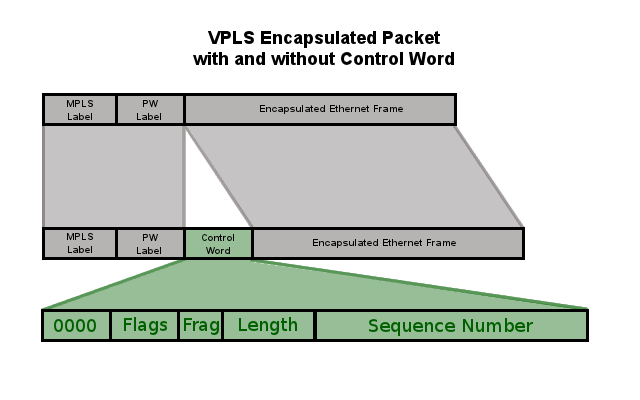
VPLS allows remote sites to share an Ethernet broadcast domain by connecting sites through pseudo-wires(PW) tunnels over a packet switching network (PSN). Since VPLS encapsulation adds additional overhead, each interface in LSP should be able to transmit a large enough packet.
Each ethernet chipset has hardware limitations on the maximum packet size that it can transmit. Even now there are Ethernets that support only one Vlan tag, meaning that the maximum packet size without Ethernet header and checksum (L2MTU) is 1504 bytes. Obviously, it is not enough to forward VPLS encapsulated Ethernet frame without fragmentation (at least 1524 L2MTU support is required). See MTU in RouterOS for maximum supported L2MTUs on RouterBOADs.
Since not even all RouterBOARDs support enough L2MTU to transmit VPLS encapsulated packet without fragmentation, RouterOS has added Pseudowire Fragmentation and Reassembly (PWE3) support according to RFC 4623 using 4-byte Control Word (CW).
In RouterOS, Control Word is used for packet fragmentation and reassembly inside the VPLS tunnel and is done by utilizing optional Control Word (CW). CW is added between PW label (demultiplexor) and packet payload and adds an additional 4-byte overhead.
Reordering OOO packets are not implemented, out of order fragments will be dropped |
CW usage is controlled by the of use-control-word parameter in VPLS configuration.

As you can see Control Word is divided into 5 fields:
According to RFC generation and processing of sequence numbers is optional.